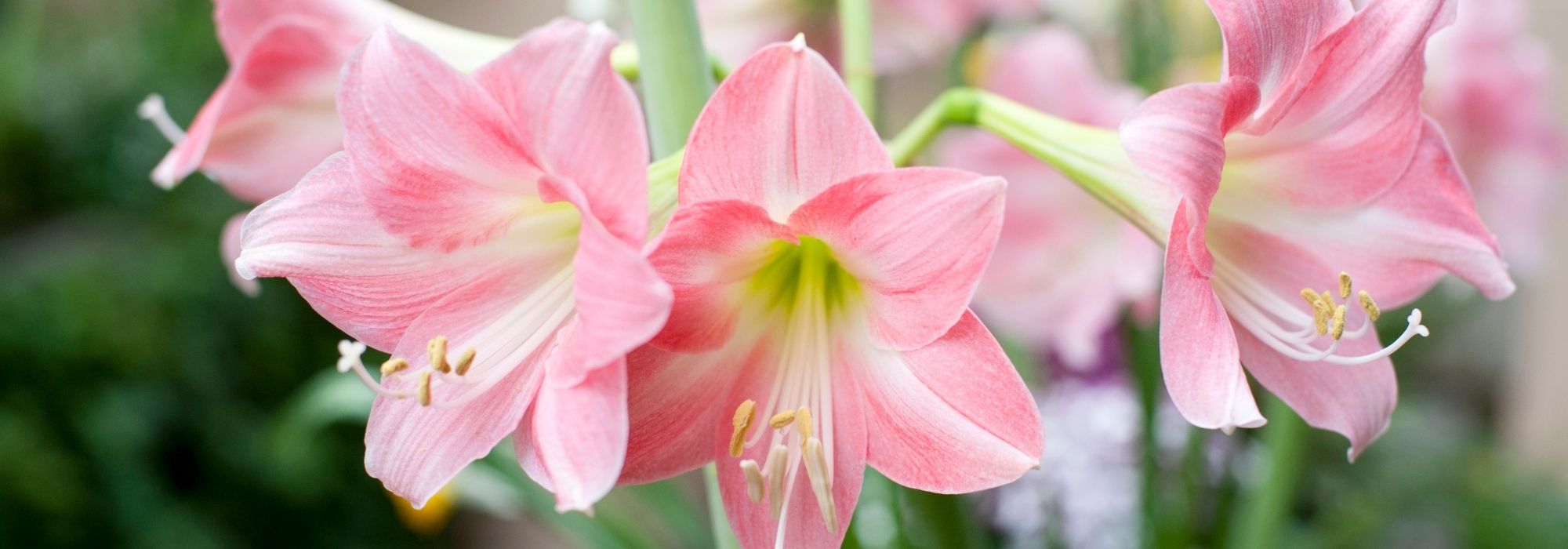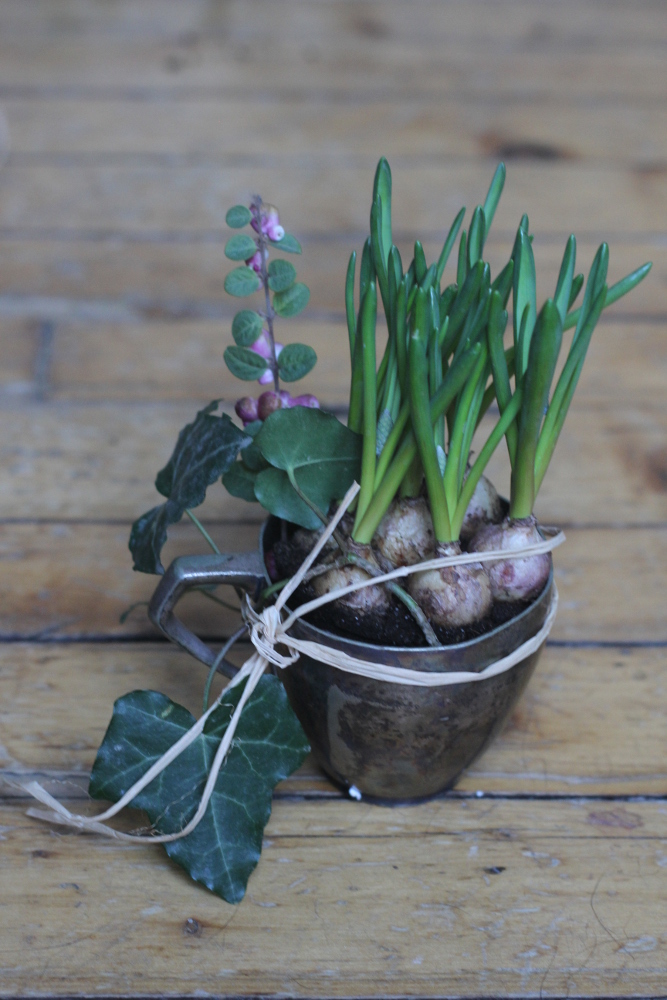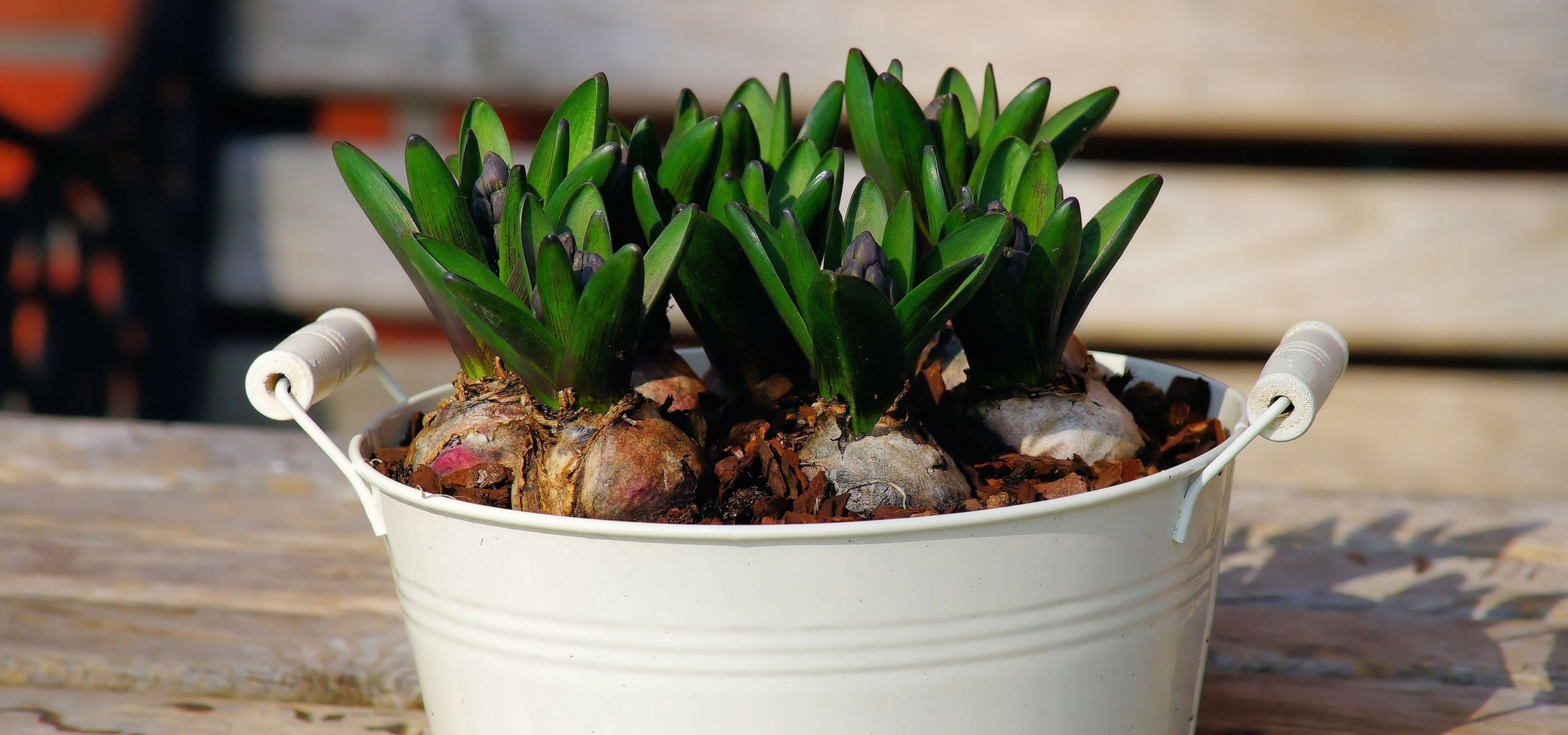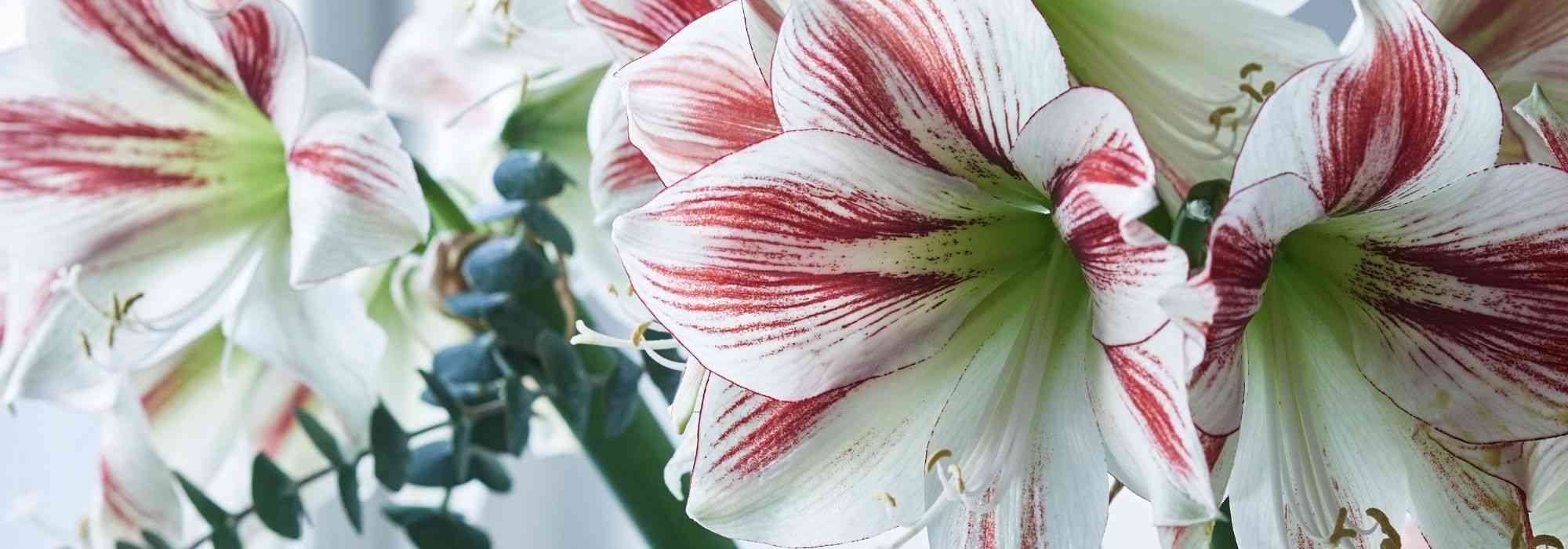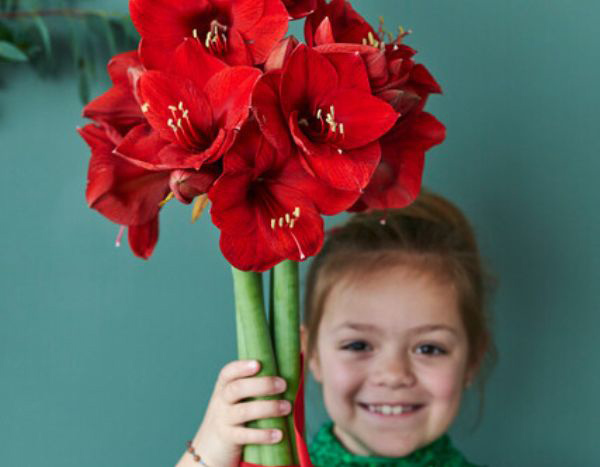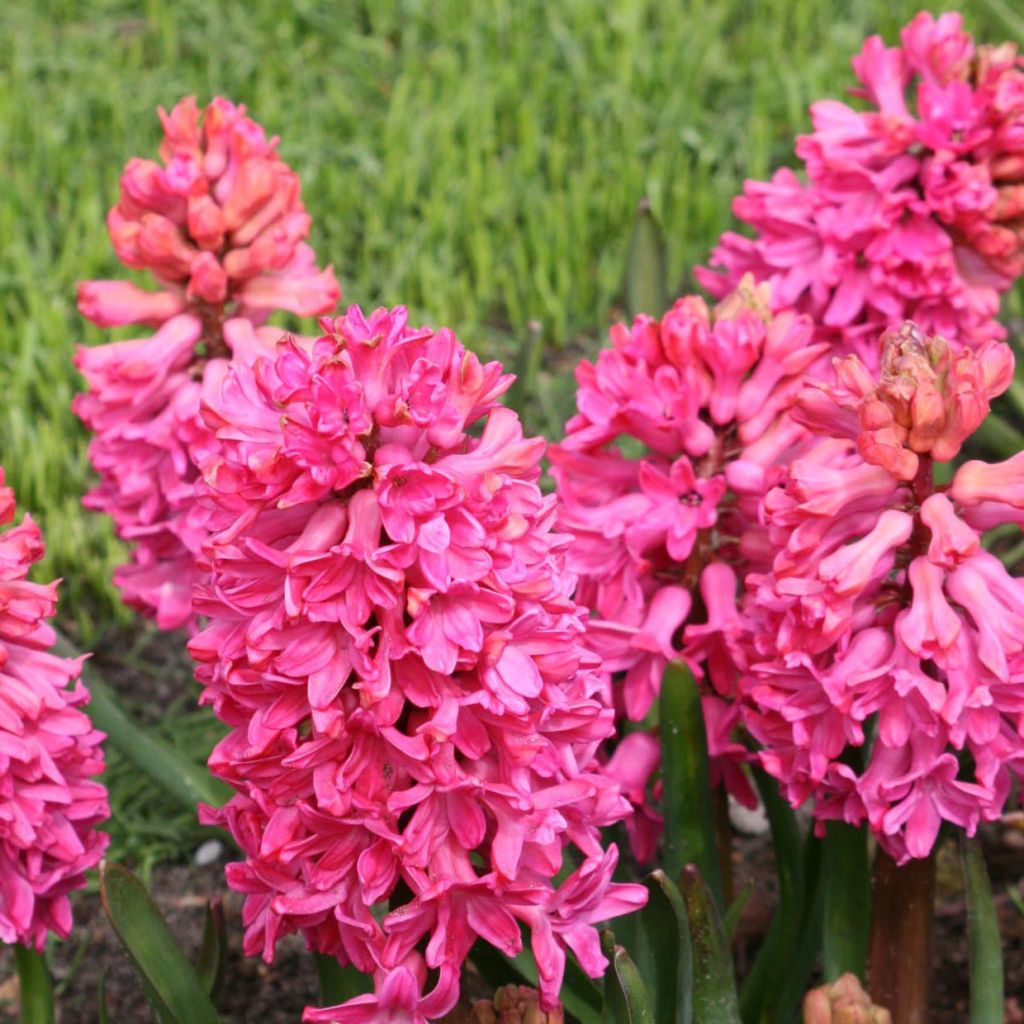

Jacinthe Jan Bos préparée pour le forçage - Hyacinthus (x) orientalis
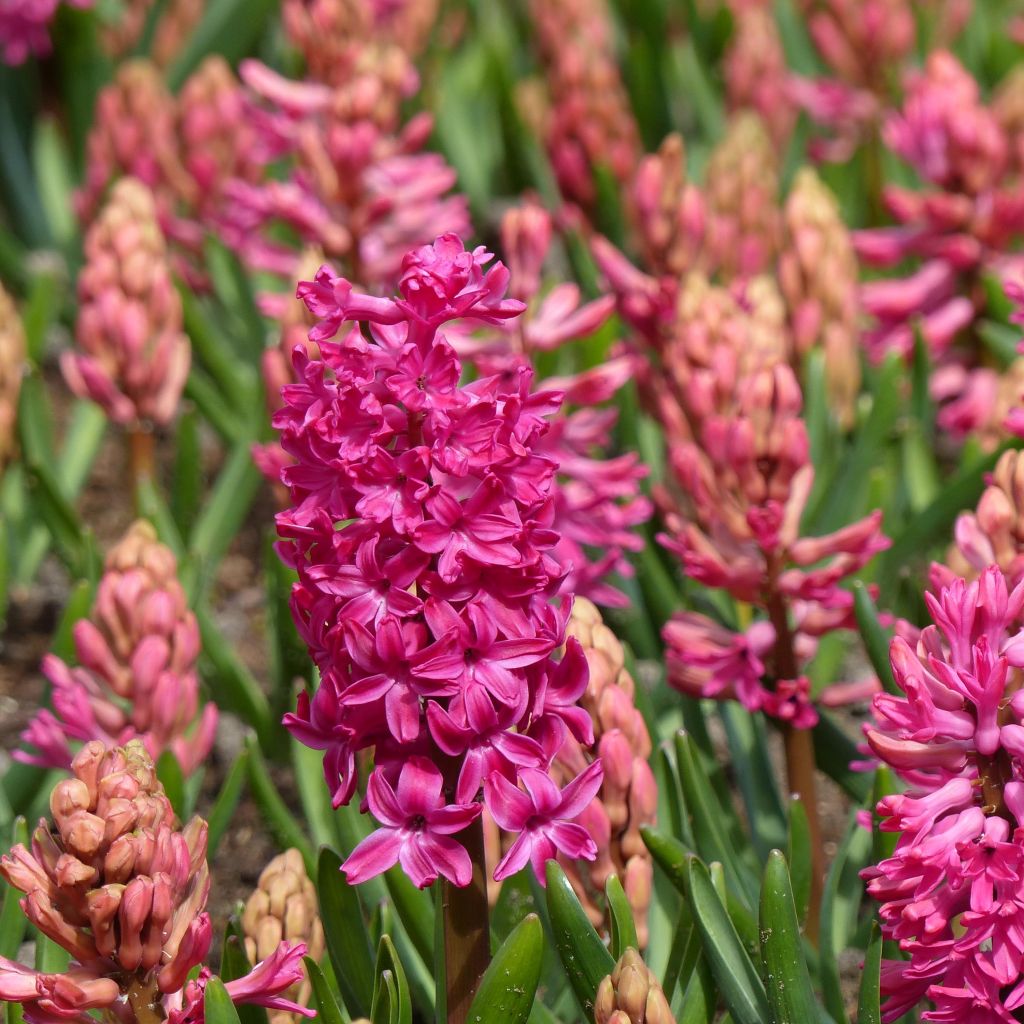

Jacinthe Jan Bos préparée pour le forçage - Hyacinthus (x) orientalis
Hyacinthus Jan Bos -Prepared for forcing
Hyacinthus x orientalis Jan Bos
Common Hyacinth, Garden Hyacinth
None of the three really bloomed, only some dried-up flower starts.
corinne, 03/04/2024
Special offer!
Receive a €20 voucher for any order over €90 (excluding delivery costs, credit notes, and plastic-free options)!
1- Add your favorite plants to your cart.
2- Once you have reached €90, confirm your order (you can even choose the delivery date!).
3- As soon as your order is shipped, you will receive an email containing your voucher code, valid for 3 months (90 days).
Your voucher is unique and can only be used once, for any order with a minimum value of €20, excluding delivery costs.
Can be combined with other current offers, non-divisible and non-refundable.
This plant carries a 6 months recovery warranty
More information
We guarantee the quality of our plants for a full growing cycle, and will replace at our expense any plant that fails to recover under normal climatic and planting conditions.

Would this plant suit my garden?
Set up your Plantfit profile →
Description
The Hyacinthus orientalis 'Jan Bos' is one of the many hybrids derived from the oriental hyacinth that blooms in the garden a week before the others. This ancient variety, obtained in 1910, has brought joy to many generations of gardeners with its beautiful flowering spikes, strongly built, highly fragrant, with a colour ranging from raspberry red to carmine pink, of an unparalleled vividness. At home, this perfectly healthy and large-sized bulb, specially prepared for forcing, will bloom for the end-of-year festivities in a bright and not overheated room.
The Oriental Hyacinth, the natural species that has given birth to countless cultivars highly appreciated by gardeners, is almost no longer cultivated. This botanical species can be found naturalized in France in the Bouches-du-Rhône, Var, Alpes-Maritimes and Lot-et-Garonne regions.
The 'Jan Bos' hyacinth, just like it, belongs to the hyacinthaceae or asparagaceae family. It has a large oval bulb and forms a clump of bright green ribbon-like leaves from spring onwards. From March to April, a robust floral stem, 20 to 30 cm (8 to 12in) long, emerges, bearing numerous star-shaped flowers with thick, waxy substance, of intense red-pink colour and a powerful fragrance. The foliage is deciduous after flowering. It is at this moment that the bulb, whose reserves are exhausted, enters dormancy. The forcing technique consists of exposing the bulbs to cold for several weeks, starting from the end of summer, in order to break their dormancy and induce the flowering process.
Among early bloomers, the hyacinth is one of the few bulbs with large flowers and one of the easiest to force for winter flowering. Reserve a special place for it in a very bright room, far from any source of heat. Forcing at home is child's play; for example, use a narrow-necked vase specially designed for forcing hyacinth bulbs. Fill it with water and place the bulb so that its base is level with the water. Make sure the water level always reaches the base of the bulb, but never higher. Don't hesitate to mix different species of plants suitable for this growing method to create original compositions: tulips, daffodils, crocuses, Greek anemones, squills, as well as branches of Japanese quince, forsythias, apple trees, cherry trees, plum trees. The flowers of hyacinths are edible, raw or cooked, and have a slightly mucilaginous texture. Depending on your preferences, you can crystallize them with sugar or add them to fruit salads. In the past, they were considered a delicacy and could be found under the name of "candied Constantinople hyacinths". The 'Jan Bos' hyacinth is particularly enhanced when combined with white early tulips.
Hyacinthus Jan Bos -Prepared for forcing in pictures
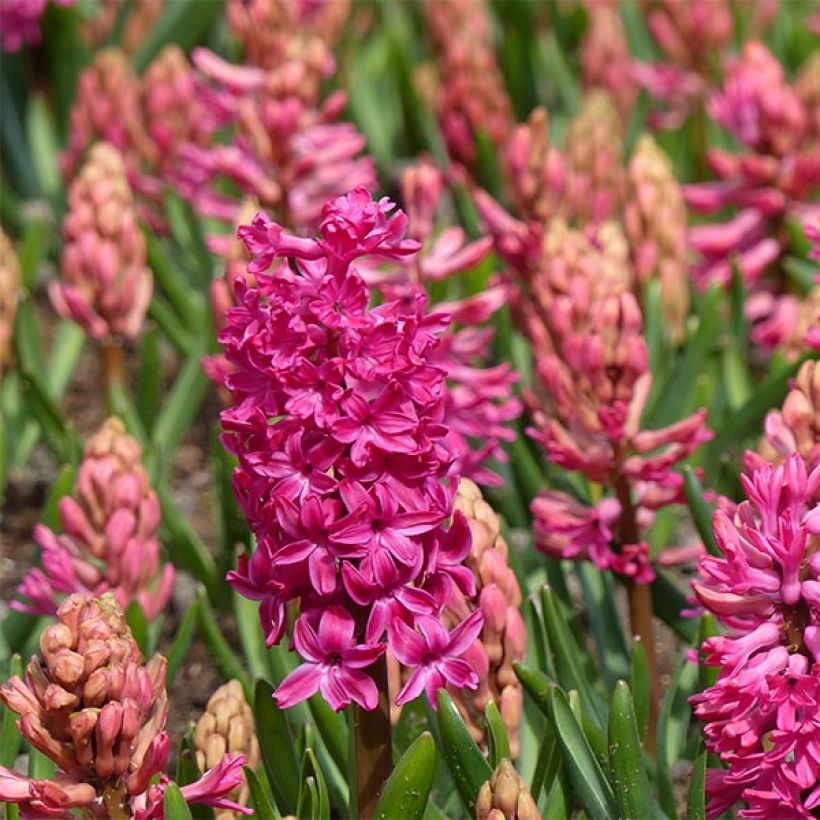

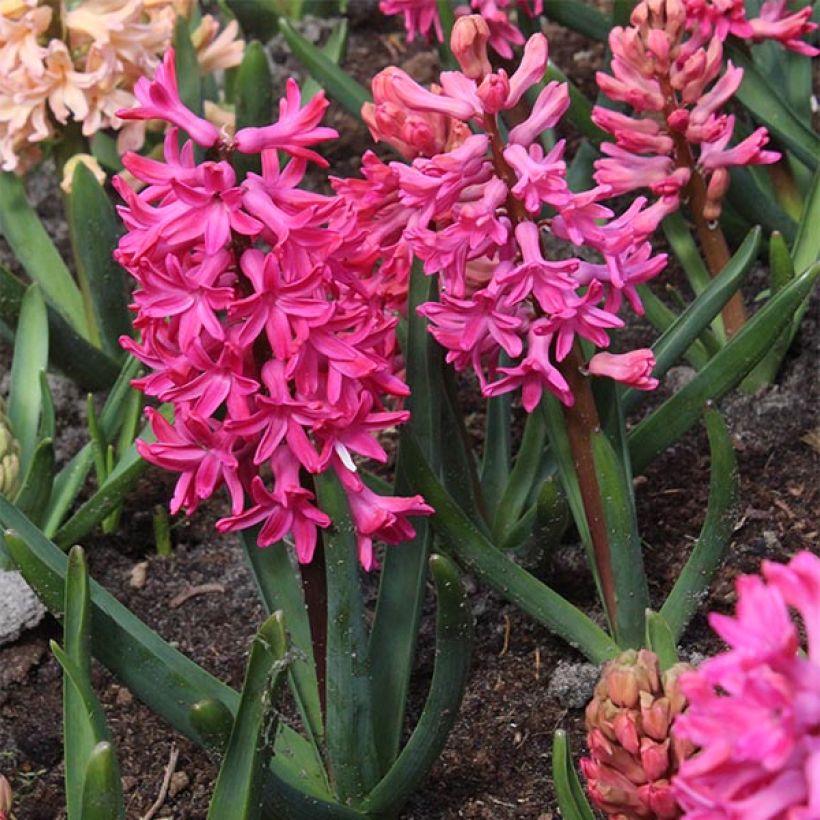

Plant habit
Flowering
Foliage
Botanical data
Hyacinthus
x orientalis
Jan Bos
Hyacinthaceae
Common Hyacinth, Garden Hyacinth
Cultivar or hybrid
Planting and care
For forcing hyacinth bulbs, it is highly recommended to obtain new bulbs cultivated specifically for this purpose every year.
Indeed, the bulbs are exhausted by the forcing process, and even a period of rest after the foliage has dried out will not allow them to replenish their reserves.
However, they can still be stored, once the foliage has turned yellow, in a cool place until autumn, when they can be replanted in the garden. The bulbs that are replanted will ideally flower after two years, as a season of growth in the open ground without flowering will have allowed them to replenish their reserves.
First method: pot culture:
Upon receiving your bulbs, choose an attractive container with a drainage hole (such as a terrine or planter) that is at least twice the height of the bulbs. Place a layer of gravel at the bottom, followed by a mixture of soil or horticultural compost mixed with sand or a ready-to-use mixture. The substrate should be lightweight and porous, a mixture of 2/3 garden soil and 1/3 sand works well.
The bulbs should be planted close together but should not touch, and the soil should cover them by 10 cm (4in).
Place the pots outside in the garden or on a balcony.
When the bulb sprouts, bring the pot indoors and place it in a dark and cool location for a period of four days to one week. Once the shoot reaches a height of eight to ten centimeters, move the pot inside the house. It is advisable to allow for an adjustment period by initially placing it in a slightly cool and bright room before placing it in a heated room, near a window in the living room, for example, while regularly rotating the pot to prevent the twisting of the flower spike.
Planting period
Intended location
Care
Planting & care advice
-
, onOrder confirmed
Reply from on Promesse de fleurs
Haven't found what you were looking for?
Hardiness is the lowest winter temperature a plant can endure without suffering serious damage or even dying. However, hardiness is affected by location (a sheltered area, such as a patio), protection (winter cover) and soil type (hardiness is improved by well-drained soil).

Photo Sharing Terms & Conditions
In order to encourage gardeners to interact and share their experiences, Promesse de fleurs offers various media enabling content to be uploaded onto its Site - in particular via the ‘Photo sharing’ module.
The User agrees to refrain from:
- Posting any content that is illegal, prejudicial, insulting, racist, inciteful to hatred, revisionist, contrary to public decency, that infringes on privacy or on the privacy rights of third parties, in particular the publicity rights of persons and goods, intellectual property rights, or the right to privacy.
- Submitting content on behalf of a third party;
- Impersonate the identity of a third party and/or publish any personal information about a third party;
In general, the User undertakes to refrain from any unethical behaviour.
All Content (in particular text, comments, files, images, photos, videos, creative works, etc.), which may be subject to property or intellectual property rights, image or other private rights, shall remain the property of the User, subject to the limited rights granted by the terms of the licence granted by Promesse de fleurs as stated below. Users are at liberty to publish or not to publish such Content on the Site, notably via the ‘Photo Sharing’ facility, and accept that this Content shall be made public and freely accessible, notably on the Internet.
Users further acknowledge, undertake to have ,and guarantee that they hold all necessary rights and permissions to publish such material on the Site, in particular with regard to the legislation in force pertaining to any privacy, property, intellectual property, image, or contractual rights, or rights of any other nature. By publishing such Content on the Site, Users acknowledge accepting full liability as publishers of the Content within the meaning of the law, and grant Promesse de fleurs, free of charge, an inclusive, worldwide licence for the said Content for the entire duration of its publication, including all reproduction, representation, up/downloading, displaying, performing, transmission, and storage rights.
Users also grant permission for their name to be linked to the Content and accept that this link may not always be made available.
By engaging in posting material, Users consent to their Content becoming automatically accessible on the Internet, in particular on other sites and/or blogs and/or web pages of the Promesse de fleurs site, including in particular social pages and the Promesse de fleurs catalogue.
Users may secure the removal of entrusted content free of charge by issuing a simple request via our contact form.
The flowering period indicated on our website applies to countries and regions located in USDA zone 8 (France, the United Kingdom, Ireland, the Netherlands, etc.)
It will vary according to where you live:
- In zones 9 to 10 (Italy, Spain, Greece, etc.), flowering will occur about 2 to 4 weeks earlier.
- In zones 6 to 7 (Germany, Poland, Slovenia, and lower mountainous regions), flowering will be delayed by 2 to 3 weeks.
- In zone 5 (Central Europe, Scandinavia), blooming will be delayed by 3 to 5 weeks.
In temperate climates, pruning of spring-flowering shrubs (forsythia, spireas, etc.) should be done just after flowering.
Pruning of summer-flowering shrubs (Indian Lilac, Perovskia, etc.) can be done in winter or spring.
In cold regions as well as with frost-sensitive plants, avoid pruning too early when severe frosts may still occur.
The planting period indicated on our website applies to countries and regions located in USDA zone 8 (France, United Kingdom, Ireland, Netherlands).
It will vary according to where you live:
- In Mediterranean zones (Marseille, Madrid, Milan, etc.), autumn and winter are the best planting periods.
- In continental zones (Strasbourg, Munich, Vienna, etc.), delay planting by 2 to 3 weeks in spring and bring it forward by 2 to 4 weeks in autumn.
- In mountainous regions (the Alps, Pyrenees, Carpathians, etc.), it is best to plant in late spring (May-June) or late summer (August-September).
The harvesting period indicated on our website applies to countries and regions in USDA zone 8 (France, England, Ireland, the Netherlands).
In colder areas (Scandinavia, Poland, Austria...) fruit and vegetable harvests are likely to be delayed by 3-4 weeks.
In warmer areas (Italy, Spain, Greece, etc.), harvesting will probably take place earlier, depending on weather conditions.
The sowing periods indicated on our website apply to countries and regions within USDA Zone 8 (France, UK, Ireland, Netherlands).
In colder areas (Scandinavia, Poland, Austria...), delay any outdoor sowing by 3-4 weeks, or sow under glass.
In warmer climes (Italy, Spain, Greece, etc.), bring outdoor sowing forward by a few weeks.






























